- HOME
- BEST POKER TRAINING SITES
- POKER GUIDES
- ONLINE POKER ROOMS GUIDE
- POKER NOTES LIVE APP
- MORE
Since the poker boom of the early 2000s, the most popular form of the card game has been Texas Hold’em. There are, of course, other types of poker, but thanks to films like Casino Royale, Rounders, and the televised World Series of Poker, the variant in which players are dealt two cards each with five community cards is the most prevalent. Poker is hugely popular, and 40 million people play it on a regular basis according to some reports – with even more according to others. But is there a need for the card game to adapt in order to continue to attract such high playing figures?
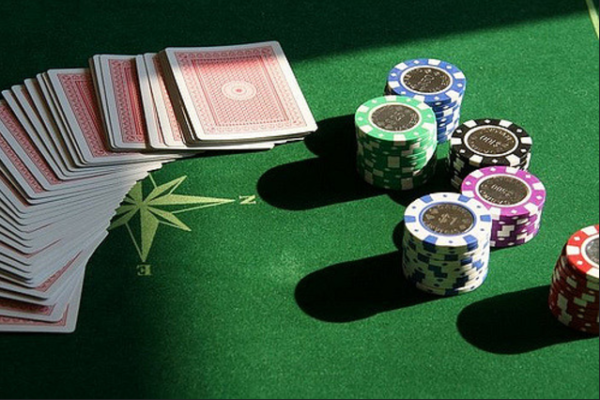
Image credit: flickr
Poker has been around for over 200 years. According to The History of Poker, the game spread through America in the early 1800s thanks to the Mississippi riverboats on which gambling was a common pastime. In those days the most widespread form of the game was Stud, and sometimes if there were only two players they would play with fewer cards. The fact that this variant of the game is now hard to come by proves that poker has had to evolve to attract players. Hold’em has become the game of choice among many online poker sites now, and it is also the most common format for films and TV. Rounders (1998), which starred Matt Damon as a skilled poker player hoping to make it to the WSOP, only made $10 million profit on its budget but has since become a cult classic. There’s even talk of there being a sequel to John Dahl’s film.
The simplicity of Hold’em has helped this variant to prevail in the media, as it is easy to quickly explain the rules to someone. That’s why films like Rounders and Casino Royale used it, and the fact that those blockbusters included it also served to boost its popularity. Nowadays, rather than spread the word about the game on riverboats, the internet has brought Hold’em to the masses. But is there a chance that Hold’em could one day fade away in the same way that Stud did?
One genre of gambling game that has had to adapt and evolve to survive is the slot machine. Slots have been around since Charles Fey invented the Liberty Bell in 1895, but they are now a million miles away from the hand-operated machines of yesteryear. Virtually every online slot game has a theme. Looking at the list of casino games now readily available, for instance, some are based on TV series such as HBO’s Game of Thrones, which has won one Golden Globe and countless Primetime Emmy awards, while others use well-known movies like Jurassic Park, which raked in $983.8 million at the box office. Players are attracted to games with themes they recognize, despite most of the slots incorporating similar game mechanics such as having 5 reels and progressive jackpots.
The way that slots have evolved from one-armed bandits to electronic slots and further to hi-tech online video slots with advanced graphics and things like parallax scrolling effects to keep people interested is a model that other games may seek to emulate if playing figures begin to drop off. But could games like poker really work with themes in the same way as slots? The thing about poker is that it has only been changed slightly over time, with different variants gaining and losing popularity at different times. Basing poker games on movies just doesn’t seem like something that could work easily, but it is possible that new technology could be incorporated to spice things up a bit. There is also the option of using wild card games to change things up a bit.
Augmented reality (AR) shot to fame last year when Pokémon Go was released, and players were able to see virtual creatures superimposed on real environments. There have been over 750 million downloads of the mobile app, and players have been able to get an early glimpse of the potential for AR. AR headsets are still far from becoming an essential household item, as shown by the fact that there were only 100,000 AR shipments in 2016. But this is expected to grow to 27.3 million by 2021, so developers will be scrambling to create more content for the devices.
Augmented reality is certainly something that could make home poker games more enjoyable, while still staying true to the traditional game. Players could wear AR glasses such as the Moverio BT-200, and see special effects when the flop comes down and when cards are shown. An example of this could be balloons and fireworks going off around the winning hand after a showdown. This would work well on televised poker tournaments as well, such as the WSOP.
It seems fair to say that with the popularity of poker now, not much needs to change to keep people interested. But maybe in the future when more games move to modern devices such as augmented reality, poker may need an injection of life in the same way.
I graduated just over a year ago from university, so to be met by the words: ‘PLO University’ I wondered whether, having completed this course, I would be able to add another degree to my CV. Sadly, the PLO University is as accredited as Trump University, the only differentiation being that it is rammed full of content.

Its main focus is pre-flop. The introduction says as much, accompanied with a quote from Erika Oppenheimer: “Without a solid foundation, you’ll have trouble creating anything of value.”
Even in the introduction I was introduced to some new concepts: Hot and Cold Equity, Realizability, as well as some old ones such as Implied Odds, something which I was relatively used to from playing No-Limit Hold’em.
READ MORE: Review of Upswing Poker’s Advanced Heads-Up Mastery Course

These core concepts would continue throughout the entire syllabus, and would be joined and developed upon as the course went on. Something I was used to was connectivity and suitedness of cards within PLO, but introducing the concepts of ‘Nuttiness’ and ‘Pushing/Pulling’ was something completely new to me. Before clicking on the ‘Nuttiness’ portion of the video series, I felt like I had a good idea as to what it would be about.
I was wrong.
There was even more jargon and phrases that I had never used before and wasn’t used to. Who knew there was front-end and back-end nuttiness? It really was like a foreign language. Every so often I would hear phrases such as ‘three-flush’ or ‘board texture,’ but they would be interwoven with certain things that I only vaguely knew, or had been introduced to me over the course of this series.
The focus on the pre-flop was extensive. In No-Limit Hold’em there are 169 hand combinations whereas in Pot-Limit Omaha there are an amazing 16,433 hand combinations. I really liked the Preflop Decision Making section, which included four sections on Early Position, two each on middle position, the cutoff, and the button. And then some special sections on the big blind, three-betting and cold-calling in position.
As someone who has only ever played the “great game” of Pot-Limit Omaha as part of a mixed game rotation, and has never professed to be any good at it, this course was perfect. I really felt my eyes being opened to certain game dynamics in a way that I had never felt in it before. It was similar to the feeling I felt in the earlier Upswing poker content I reviewed (the Lab), where something clicked and I felt myself sitting back in my chair going “Huh, I could play that hand like that?” However, in Pot-Limit Omaha this happened more often, and more powerfully than in No-Limit Hold’em.
Even in the content that I’ve consumed so far, I can feel myself improving every time. Sadly, I’ve not had the chance to put these new-found skills into action, but I feel much more equipped to play with the concepts of Nuttiness and proper knowledge of equity when holding four cards instead of two.
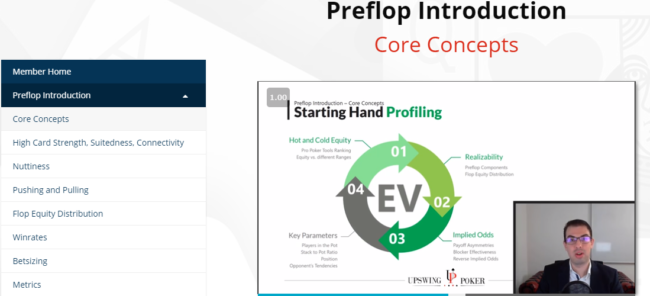
However, my favourite part of the course came at the end with the ‘Play and Explain’ sessions, most of which were at PLO500. The fact that Fernando “JNandez” Habeggar was applying concepts that you had learned at such high stakes really showed you how informative and important this syllabus could be to someone playing Pot-Limit Omaha for a living, or someone who just wanted to get better at it.
It was almost as if you were watching a Twitch stream, but simultaneously with some of the highest level of Pot-Limit Omaha teaching you can get your hands on. That is a really intuitive way of teaching these days, and perhaps something Upswing could look to do more of in the future.
WOW! Wow is all I can say.
I have read several poker books, but they have been all about strategy. While Moorman has a hand analysis section that comprises two-thirds of the book, the first section is Chris Moorman’s autobiography. I love biographies. Every good book or movie has to have a few foundational elements to make it good, and one of those elements is character development. If the protagonist is static throughout the story, it isn’t dynamic. The main character is more multidimensional if he or she undergoes a change. Chris Moorman walks us through his own evolution from a talented young bridge player with advanced Master status at the age of 14 to nearly becoming the WSOP Player of the Year in 2011 at 26 years old to winning his first WSOP bracelet this year just before turning 32.
I’ve read every message after my win and want to thank everyone so much for the overwhelming love and support. Still can’t believe it’s real pic.twitter.com/ytIoTBg5zx
— Chris Moorman (@Moorman1) June 18, 2017
Throughout all of his career milestones and achievements he has had personal growth as well. No professional poker player’s story would be complete without covering the dreaded day of April 15, 2011 better known as Black Friday. Chris was a prolific online player who made his living primarily from online tournaments. He lives in the UK, but he was impacted simply because Black Friday changed online poker traffic. He specifically describes the learning process he went through while backing other poker players; 2/3 of them were American players at the time, which had a huge negative impact on him. I won’t give any spoilers, but it was a wild high roller coaster ride! Chris also talks about some of the sponsorship deals he has had; some good, some not so good. Moorman is also a love story, as Chris describes how he went from socially awkward college kid to a ladies man!
READ: Interview with Chris Moorman, Online Poker’s Most Successful Tournament Player
This is just such a great read, a real page-turner! I couldn’t put it down. I hadn’t read any biographies from poker players before. I am excited to find more, but I have to say the rest better be really great because Moorman (published by the venerable D&B Poker) has set the bar high! I am so excited to watch Chris Moorman play now that I know more about his personal life. That is what is so great about biographies; once you know their back story – you are that much more invested in their game. He is a down-to-earth guy, he even replied back after I messaged him on social media letting him know that he is my new poker favorite after reading his book. I just thought that was so great!
That’s not all, not even close! As mentioned, not only does Moorman have the fast and furious autobiography, it also has an extensive hand analysis section. I can’t even begin to tell you how powerful the hand analysis is that Chris provides. Up until this point I haven’t slapped down any buy-ins to live or online tournaments because I primarily have focused on cash games. Since reading Moorman, I have started dabbling in some of the freerolls that are available online, have implemented several of the takeaways from Chris’ hand analysis, and I have crushed it! I may have been converted to a tourney player after this; we’ll see.
If you’ve never studied hands away from the table, you are not doing yourself any favors. You should be actively staying on top of current game theory trends, taking poker notes, and finding your leaks and plugging them. I heard a good quote once, “Practice makes permanent.” It basically means that if you are putting in a lot of hands but not doing the work away from the table like studying past hand history, you are going to be habitually playing less than optimal poker. That is where the power of Moorman’s hand analysis is. How often do you get the chance to get inside of a real life poker pro’s head and see their thought process street by street!?
Moorman has called upon some of the best poker players in the world to provide hand analysis of Chris’ play. We are talking some heavy hitters, including Fedor Holz, Maria Ho, Vanessa Selbst, and the one and only Daniel Negreanu. If you take advantage of the opportunity to buy and read this book, I’m confident that it will translate to more tournament cashes and deeper runs for you. I would recommend this book all day long. Great bio, great study material – it’s a win-win.
A year ago, SugarHouse Casino launched their New Jersey online casino in partnership with the Golden Nugget. Since that time, it has quickly grown to be one of the more popular online gambling destinations in the Garden State.
While they don’t offer online poker (yet?), they still offer an awesome spread of slots, video poker and online casino games. So, if you’re in New Jersey or are planning to go there soon, we’ve got five reasons you should play at SugarHouse Online Casino.
https://t.co/dW2NSn1QAw is here for ya, every step of the way! #workhardplayhard ✊ pic.twitter.com/UUDsMchpqC
— SugarHouse Online (@PlaySugarHouse) August 9, 2017
What’s the worst part about any casino bonus? The play-through requirements. Some sites require that you play through an insane number of times in order to claim the bonuses you get. For example, a site requiring a 30x play-through would require that you wager $3,000 to claim a $100 bonus. Most players will never be able to claim their bonus at that rate.
SugarHouse Casino only requires a 1x play-through for any bonus amount. If you take advantage of a 100% bonus offer and deposit $100, all you need to do is wager that $100 to be able to cash out that bonus.
How easy is a 1x play-through? Let’s assume you deposit $100 and get a $100 bonus. If you play single line $.25 video poker game at max bets, you can “blow through” $100 in just 80 hands. That’s not even an hour’s worth of play.
Editor’s Note: Philadelphia’s SugarHouse Casino does, of course, have a live poker room. Here’s a story called The Virtual Rail, which took place there.
If you want to earn more free bonus money, just keep an eye out for SugarHouse Casino’s daily Free Bingo games. Players will get an invite at random for these games. Should you get an invite and find yourself lucky enough to win, you will have free bonus money applied to your account.
What’s the play-through for this Free Bingo bonus money, you ask? Just 1x. That’s right folks, there are no special play-through rules for this game. Win $50, wager $50, and you can cash out your net winnings.
SugarHouse Casino runs 20 different Free Bingo games each day, so you never know when you might get a chance for some free money.
Relax and unwind while winning a share of $1,000 nightly playing in the Bingo After Dark tournaments all week long… pic.twitter.com/bqZZepSspg
— SugarHouse Online (@PlaySugarHouse) July 17, 2017
How many times have you gone into a casino and saw people trying to figure out which machine is “hot”? Some of their reasoning behind what makes a machine “hot” can be mind-boggling.
At SugarHouse Casino, you don’t have to employ any special methods to figure out what games are “hot” because they tell you!
Just head over to the ‘All Games’ tab at the website and select the ‘>100% Payback in Past Hour’ filter. By doing so, you will see which games have paid out over 100% of wagers in the past hour and just how hot they are.
When I did this search, Mythic Maiden was paying out 467% while FairyTale Legends, Reel Rush, and Dead or Alive were paying out over 200%.
While we can’t guarantee that you’ll win by using this method, you can at least use the available information to plan and strategize how you’ll play your session.
Ready, set, spin! Jump on Montezuma right now while it’s RUNNING HOT and paying back at 450%! Log onto https://t.co/NDA5NmXqYV now! pic.twitter.com/rniOLHGnej
— SugarHouse Online (@PlaySugarHouse) March 8, 2017
If you are worried about installing software on your computer to gamble online, fear no more! SugarHouse Casino does not require a client download to play online. All you need to download is a geolocation plug-in for your browsers and you’re ready to go.
Better still, one download is all you need. You don’t have to install separate files for each browser as their install makes all browsers geolocation-ready.
If you prefer to play on your mobile device, SugarHouse Casino offers a mobile app for iOS and Android. Just install it and you can play on the go, anywhere you have Wi-Fi connectivity.
SugarHouse Casino gives you the ultimate incentive to sign up for their Rush Rewards program: $10 in Free Play. Just sign up for Rush Rewards and you will get $10 in Free Play to use on the site.
During your first day of play, you can earn $10 in Free Play for every 5 points earned playing slots, video poker, or table games. You can earn up to $300 in Free Play during your first day.
Note that you must use your Free Play funds the same day you earn them. However, the Free Play bonus is a great way to get acclimated to the games at SugarHouse Casino. In addition, you continue earning points towards iRush Reward tiers.
With iRush, you can earn members-only prizes including scratch cards, bonus bingo invites, wheel spin prizes, bingo prize multipliers, and SugarHouse Casino special offers.
So why not sign up for Rush Rewards? It’s free and you get at least $10 Free Play just for registering!
Get ready to take your online playing experience to the next level. Welcome to iRush Rewards, New Jersey’s leading online rewards… pic.twitter.com/NpdUVezOQY
— SugarHouse Online (@PlaySugarHouse) May 1, 2017
Crowdfunding, using platforms like Kickstarter, has provided innovators with a way of funding thousands of exciting projects that may never otherwise have seen the light of day. At the time of writing, nearly 130,000 projects have been funded on Kickstarter alone, raising over $3 billion from eager investors.
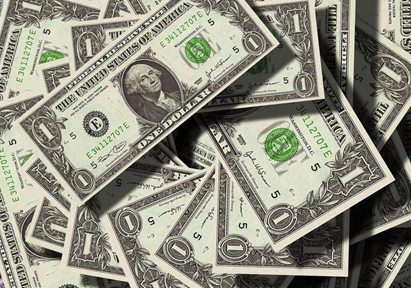
Image credit: Pixabay
The gaming category on Kickstarter is a particularly interesting one. It’s no surprise that video games feature heavily on the platform and there have been some massive successes. Retro revivals like Elite Dangerous have been especially popular, and remain so. This is proven by the recent Yooka-Laylee, a game produced in the style of Nintendo classic Banjo-Kazooie, that raised over £2 million.
However, it may surprise some people that it’s not computer games that rule Kickstarter’s gaming category. In fact, in both 2015 and 2016, tabletop games raised considerably more money than video games. Furthermore, “playing card” projects sit in third place in the gaming category, with more funded projects and money raised for them than for both mobile games and gaming hardware projects.
When it comes to card games, the one that springs instantly to mind is Cards Against Humanity – a game that started off seeking just $4,000 in crowdfunding back in 2011. It has subsequently gone on to become a cult classic and has spawned numerous expansion packs. Interestingly, the game is open source and made available to download online in the form of printable cards by its creators, although sales are still going well.
But it’s not only innovative new games that have found crowdfunding success; projects involving traditional playing cards and poker decks often prove popular. Over $25,000 was raised for a set of poker playing cards designed around the theme of Dante Alighieri’s Divina Commedia in 2015. At any one time, there are typically 50 or more active projects on Kickstarter based around the theme of traditional playing cards.
READ: 5 of the Most Unique Decks of Playing Cards
Figures suggest that the market for board and card games is indeed “exploding.” The industry is now worth over $1.2 billion – and that’s only in the US and Canada! Not only are people rediscovering the pleasures of more “traditional” gaming – the collectibility of these lavish card decks is seemingly playing a part, too.

Image credit: Pixabay
Of course, there is a place where this new trend for card games and poker decks converges with electronic gaming, and that’s on the internet. As well as playing poker online in many variants, including Texas Hold’em, Omaha, and Blaze poker, other card games such as blackjack, pontoon and baccarat keep gaining in popularity. The question that occurs is whether all the proud owners of these highly-collectible crowdfunded card decks also play the games “offline” using these sets.
With some of these decks of cards costing well over $10 each, it would seem likely some people are buying them solely to collect them (or perhaps even to maintain them as “brand new in box!”). However, it would be a terrible shame if such exquisite designs never saw the light of day in a real-life card game!
Either way, with 264 playing card projects funded in 2016 alone, there are clearly plenty of these sets kicking around. Hopefully, you’ll have the pleasure of playing with one of them soon.
Home games offer amateur players a chance to get together and socialize while enjoying their favorite game. Chances are that most will never play poker outside the confines of the home game.
However, there are many of us who are more ambitious and are able to take a few risks in life. When this happens, it becomes a big deal in the local home game community. Below is a list of five big-time events for home game players.
Most amateur poker players will never have the experience of playing at the World Series of Poker, so when one of your home game buddies gets to go, it becomes a big deal. It doesn’t matter whether you play the Main Event or the $565 Colossus, as long as you are playing for a WSOP bracelet.
The first time I went to the WSOP in 2006, it was a huge deal with all the folks that I played poker with locally. By pure chance, ESPN got a shot of me in the $1,500 Limit Hold’em event at a table that was beside Phil Ivey.
READ: Exclusive Interview with Phil Ivey
For two weeks afterwards, I got phone calls whenever someone “saw me on TV.” I was only on screen for about 8 seconds as the camera panned across the room, but I was on TV playing poker and to everyone at home, that was a big deal.
Vegas is considered the Mecca of gambling and poker in the United States. Whenever a home game hero decides to trek out to Vegas, it’s usually a banner event. While many of you play for cash in your home games, it doesn’t compare to playing poker in Las Vegas.
Depending on what stakes you play for at home, you may be playing higher in Vegas than you’ve ever played, even if it’s for relatively low stakes. Odds are that your home game buddies are going to give you advice on what games to play, what poker rooms to visit, what you should go see – even if they’ve never been to Vegas themselves.

Also, be prepared for “can you take this $100 and gamble it for me?” In some cases, your buddies may want to pool some resources and back you in some games. It’s up to you whether you want to take them up on it, but make sure you have a solid agreement in place before doing so.
If you go to Vegas, try and pick up a few cheap souvenirs for your buddies. There are plenty of cheap gift shops in Vegas and you can even get some customized poker chips made on Fremont Street that can be given out as card protectors.
There are fewer things that will make a home game hero feel invincible than going on a poker trip and taking down a tournament. It almost doesn’t matter the size of the tournament as long as they walked away with the trophy.
I took down that $360 Bounty last night @GoldenNuggetLV for $5k (w/ 8 bounties). Only 106 entries. Fun times! pic.twitter.com/ZDlSW6Mqgh
— Valerie Cross (@vcrosspoker) June 15, 2017
For weeks afterwards, the home game will hear stories about the event and how he or she outplayed the various locals and donkey tourists in the event. They will likely bring their trophy to the next home game.
If you’re lucky, they will bring some of the cash they won in that tournament and “donate” it in your games.
Remember the first time you met a celebrity poker pro? Chances are that you posted about it on social media and then started telling all of your buddies about it.
When this happens to a home game hero, expect to hear about it at the next game. They’ll probably break out the selfies and autographs they got from the pros. Those of you who play with Robbie probably are sick of selfies by now.
Come meet @phil_hellmuth and buy his book, Poker Brat! Right now in the Rio hallways at WSOP! pic.twitter.com/RI2vYiLWiw
— Robbie Strazynski (@cardplayerlife) June 14, 2017
I must admit, I am even guilty of this. When I went on my first live poker trip, I ran into Robert Williamson III, Men “The Master” Nguyen, Phil Ivey and a host of other pros at a WSOP Circuit Event. I still have the autograph I got from RWIII.
This isn’t something poker players want to experience, but many people will go on a poker trip and lose everything they take with them. Whether it is a streak of bad luck or admittedly bad play, they go out with hundreds or thousands of dollars and come back with nothing but a story.
I may never leave his place. Unless I go broke lol #poker #pokerlife #pokerplayer #palazzo #lasvegas #vegasstrip #gamble #suitelife #wifsuwo pic.twitter.com/PzacjNT6iB
— Justin Sung (@TheCrAzian) November 26, 2016
When this happens, the best thing you can do is to try and console your poker buddy and welcome him back into the game. At this point they are just looking for a bit of a confidence boost to take away the sting of the loss. This isn’t the time to give them shit about their losses.
Welcoming the losing player back into the fold will help strengthen the bonds already established and ensure they keep coming back in order to donate to you what they left elsewhere on their trip.
While most of us agree that poker is one of the greatest games on earth, it will never compare to casino gaming in terms of popularity. All you need to do is look at the revenues of online poker versus online casino gaming to get a sense of the divide between the two.
Why do players overwhelmingly prefer casino games over poker when they know that the house has the edge? There are many reasons, but below are seven of the top reasons why poker will never be as popular as general casino gaming.
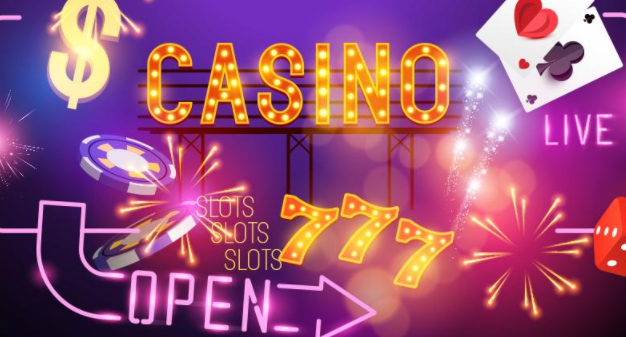
Image credit: Zynga
Here comes a hand! Crap. It’s not playable, so I have to fold. Now I have to watch the rest of the table act until the next hand comes.
How many times per hour does this scenario happen when you’re playing poker? 15, 20, or more? Imagine being the average recreational gambler and having to sit through all this downtime. After a while – even if they’re diligently taking poker notes – they are going to get bored.
You don’t have all the downtime of poker in other casino games. Slot machines are a constant flow of gaming that goes as quickly or as slowly as you can push buttons and pump money into the machine.
Table games also run at a much faster speed than poker. Even if you fold early in a hand of Blackjack, the wait until the next hand is often half of what you’d have in poker.
Players want action and, unless they are playing every hand or at a crazy table, poker often doesn’t provide the same virtual non-stop action.
If you’re an introvert, live poker sometimes isn’t the most appealing game. Your average introvert is going to be the chattiest player at the table. They just aren’t comfortable interacting with opponents like Daniel Negreanu and others.
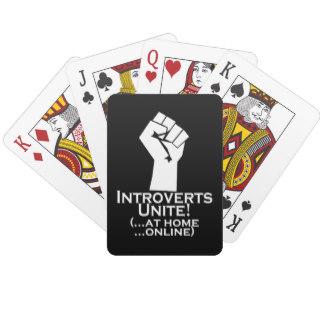
Worse still, there’s a large movement to “make poker fun again,” which can also largely drive away your introverts. One thing I hated about this year’s Main Event coverage was Antonio Esfandiari’s blasting of what he called “robotic players” in poker. While it doesn’t make for the best TV, being “robotic” is more a reflection of a player’s personality. Trying to force fun is just going to convince introverts to avoid live poker rooms and only play poker online.
Winning a major poker event like the WSOP Main Event provides a player with life changing money, even after taxes. There are many examples of this in poker, but it will never compare to being able to win a large sum of cash in a single spin.
Earning life-changing money in a poker event typically involves several days of play. It also requires you making it through a field of hundreds or even thousands of players. Your average gambler isn’t going to have the time, patience, or ability to make a life-changing win happen in poker.

However, anyone can easily sit down to a jackpot slot machine or video poker machine and potentially win life-changing, or at least life-enhancing, money in a single spin. If you play online casino games, you’ll offer find sites offering a huge selection of free spins on games, including jackpot games.
Imagine sitting down with some free spins and hitting a jackpot. While the odds may be long, someone is eventually going to hit. Everyone who plays has the same odds of hitting the jackpot. You can’t say that about poker.
When you first got started in poker, did you imagine how much work you’d had to do in order to get better and move up in stakes? Most people don’t and this can lead to turning them off to poker. If you want to be a long-term success in poker, you are going to have to study.
The average gambler isn’t going to want to put in the time or study to become “good at poker.” They either choose to play for low stakes or instead play casino games where you don’t have to be a math genius to win.
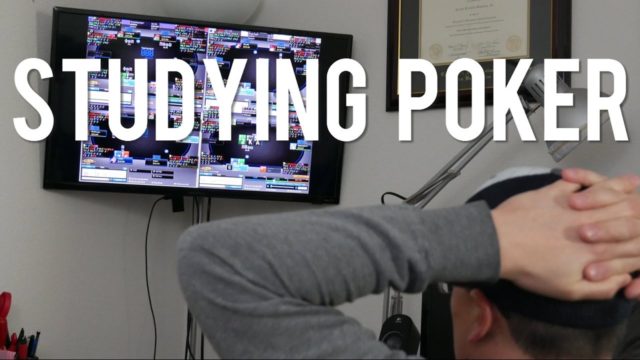
Go into the average poker room and count the number of different forms of poker spread. You’re lucky if it’s more than three. On average you will have NL Hold’em, Limit Hold’em, and either Stud or Omaha Hi-Lo. Often you’ll only find Hold’em games.
Look outside of the poker room at the rest of the casino and you can see a large variety of different games you can play. Variety is the spice of life and poker rooms often aren’t spicy enough for some.

Ever notice how noisy slot and video poker machines are? That’s to attract you to play the games. It is scientifically proven to work. All the bells and whistles stimulate the pleasure centers in the brain and keep players at the games longer.
Poker doesn’t have the same appealing sounds to the average player. Go into your normal poker room and the main noise you’ll hear is shuffling chips. While that will get the juices flowing for many poker players, the average gambler will simply be annoyed.
Poker rooms are notorious for being tight on the comps they offer their players. On average you’re looking at $.50 to $1 an hour for low stake games, which is about $8 max on a standard 8-hour day of play.
Casino games allow you to earn comps at a much faster rate based on your play. A few years back, I was on a bit of a heater in video poker and racked up a ton of comp points in the game.

Not only did I get a ton of rewards, but I got offered free stays at the casino for the next two years afterwards. Granted, a lot more money cycled through the machines than would have in the poker room, but your average gambler isn’t looking at that. They are looking at the free stuff they can get; poker room comps are often a joke in comparison.
There are many reasons why people will tell you that they enjoy playing poker. Common ones you’ll hear are things like financial independence, competitiveness, or the ability to travel to some of the most beautiful destinations in the world. But for some players, there’s another reason – one that is less spoken of in polite company.
And it’s this: the ability to do crazy things that you would never in your normal life even consider doing, or as it is sometimes referred to more plainly: being a degenerate.
I admit I’ve always had a fascination with this other side of poker’s culture. To be clear, I don’t mean things like scamming people or leaks in the pit, or anything like that. What I’m taking about is the fun stuff; the zany stuff that pushes limits in creative ways.
Things like Joey Ingram’s legendary 24-hour online PLO session; Phil Laak playing poker non-stop for five straight days in order to get his name in the Guinness Book of World Records; or an MMA match between two average Joe poker pros because…. you know, why not?
For me – and I imagine some of you reading this – the idea of being able to just completely let loose from reality and do something for a short while that you would never otherwise do is truly beautiful and poetic in its own special way. Unfortunately, it’s also something that my nit personality has kept me from doing…
… except for that one time in Atlantic City when I basically played for 24 hours straight, of course.
It all started, as most things in New Jersey do, with an evening conversation over dinner at the diner. My friend Katie and I met in law school and we both had the poker itch. Normally, if we were going to go down to AC for a session, we would plan it in advance so we could get an early start to the morning, But, as we were sitting there over our greasy food, she looked up at me and asked “wanna go play some cards?”

Atlantic City
It felt like a line straight out of Rounders, as well as a straight up challenge from one poker player to another. How could I say no?
“Let’s go,” I answered. “But I have one condition.”
“What’s that?” Katie asked.
“We have to go to Dunkin’ Donuts first.”
“Naturally.”
So off we went, Iced Caramel Swirl Latte in tow. Pulling up to the bright lights of Atlantic City around midnight. We headed straight over to Caesars.
Now, as you can tell from the fact that I write for a living, I’m obviously a #baller who loves to play for high stakes. So, as soon as Katie and I got to the casino, we plunged right in to the action at the $2/4 Limit Hold’em (LHE) tables. There we sat, grinding away and drinking free shots until the following hand came down nearly six hours later:
The under the gun player raises, and there are four callers before it gets to me in the Big Blind. I look down at 6-9 offsuit. I seem to vaguely remember deciding to make the call because I was getting good pot odds; either that, or it was because I was on my sixth free drink… It was 4am, my caffeine levels were down (that DD latte had left my system a long time ago) and I was playing No-Fold’em-Hold’em.
The flop comes 6 6 9 rainbow. This is what savant LHE players call the Big Blind Special. I’m already thinking of how many DD latte’ I’m about to win as I toss my two white $1 chips out there like the Hold’em boss I am. The under-the-gun player (UTG) calls, and then everyone else folds. The turn comes an A. I bet, he raises, and I call to slow-play. After all, I wouldn’t want to scare him off with the nuts. The river is a K, making the board 6 6 9 A K.
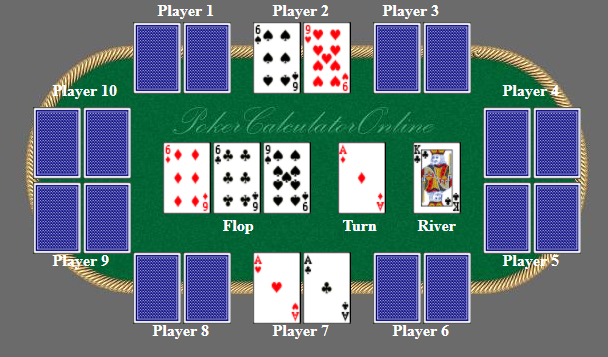
That’s when things got crazy. I throw my four white chips out there, and he raises. I raise. He raises again.
Now, for those of you who are unfamiliar with the joys of No-Fold’em-Hold’em, players can actually raise the river as many times as they want until both players are all-in. In this instance, given the fact that the number of video poker variations of a full house I would fold is exactly zero, I decided to raise again… because you would be absolutely shocked how much video poker and No-Fold’em-Hold’em seem the same at 4am by your sixth shot of rum.
Eventually, I ended up putting all my chips in the middle with my flopped boat. Incredibly, however, the UTG had turned a bigger boat, holding AA. This was not what I had in mind when I pictured degenerate snap-trips to AC at midnight. Where where the huge scores at the $2/4 LHE tables? The glamour? All I felt like was that I needed another latte ASAP to clear my head.
After taking such a sick beat, I wandered away from the table dazed and confused (mostly because I was drunk), with my wallet $100 lighter. I wandered all the way to the penny slots, where Katie found me a few minutes later, dejectedly pressing the button, spinning for dollars.
But Katie is a good friend, and after confirming for me how completely unlucky I had been, she took me outside to get a hot dog, Coke, and some fresh air. She then took me back into the parking lot and let me sleep it off for about three hours. It was the first time I had ever spent sleeping in a car in AC. Three hours later, I woke up and played another 12 hours with Katie – my first (nearly) 24-hour session.
It was also the last. Life intervened and I have never had another chance to live that degenerate life. It might not have been much, but for one night, at least, I will never forget the little taste that I got of the other side of the game that I’ve fantasized about so much.
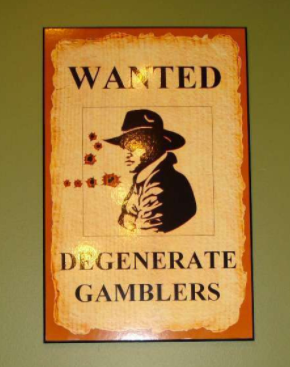
Few people come into poker hoping to become the next Allen Kessler, and that’s kinda sad. While the butt of many jokes, Allen Kessler has been a surprisingly consistent poker player over the years.
While many in poker may view him as a min-cash machine, the reality is that lots of us would be lucky to have the career he’s enjoyed. With that in mind, here are 7 reasons why you should aspire to be more like Allen Kessler.
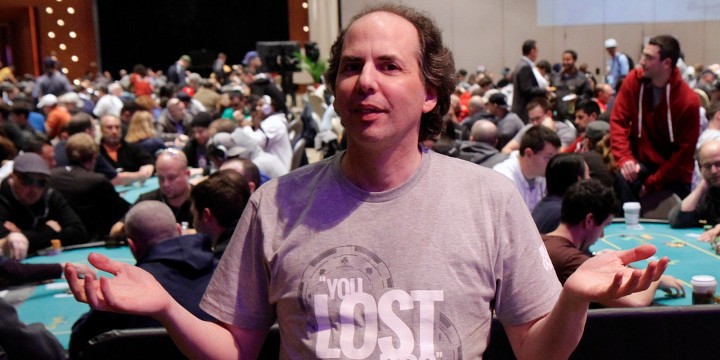
Photo credit: BJ Nemeth
Allen Kessler has won $3.41 million in live poker tournaments over the course of his career. Some of you probably are inserting your favorite min-cash joke right about now, but Kessler’s tournament cashes date back to 2001 and, looking at his HendonMob profile, he shows remarkable consistency.
He has cashed for six figures in every year but one from 2005 to 2017. He’s also cashed 56 times at the World Series of Poker, good for 32nd all-time.
While he’s often been viewed as the “King of the Min-Cash”, Kessler has won 15 tournaments over the course of his career with 3 WSOP Circuit rings to his credit. Let’s also not forget that he was the 2013 HPT Player of the Year.
LISTEN: Exclusive interview with Allan Kessler
Kessler consistently finds himself in or near the GPI 300. At the time of this writing, he’s 364th. While that may not sound like that big of an accomplishment, you have to remember that the GPI ranking system takes a running tally over the last five years. That means that Kessler is playing well enough to regularly find himself included among the top 300 tournament players in the world.
Some of you probably aren’t impressed with that stat. I understand that. However, when you consider that the GPI 300 tracks over 250,000 poker players worldwide, finishing in or near the top 300 is a pretty bold brag.
If there’s ever been an argument to support using slots and video poker to supplement your poker bankroll, Allen Kessler may have it. Anyone that’s followed him on social media has seen his multiple brag posts about hitting various slot jackpots or when he hits a royal flush on video poker. I personally cannot count the number of times he’s claimed to have freerolled into a tournament after hitting a royal in video poker.
Kessler can be regularly found grinding away at penny slots at any casino he plays at. He recently hit a decent-jackpot prize on a penny slot, but also later admitted he spent more than he won by chasing said prize. That’s OK; he’ll probably hit a couple of royals on his next trip to make up for it.
Amazing 679,000 jackpot! (Pennies) I still lost chasing it! Glad to get some back. pic.twitter.com/BPfx0v2GXM
— Allen Kessler (@AllenKessler) July 30, 2017
Despite regularly playing “house games” like slots and video poker, Kessler does seem to have fewer leaks than the average live poker player. I can’t recall ever seeing him posting about throwing away money in the pit, sports book, or over insane prop bets.
About the only thing we regularly see him put money on outside of poker and slots are last-longer bets. I can think of several players who would be wise to take the same approach with their bankrolls.
READ MORE: On Poker Budgets and Poker Bankrolls
There’s been a running gag that if Allen Kessler wins a WSOP bracelet, it would bring about the apocalypse. Kessler has come close on multiple occasions, but has yet to bring about the end of the world.
By the way, Kessler has played up the running gags, often commenting about it on Twitter when he’s leading or running deep in WSOP events.
Poker apocalypse? pic.twitter.com/eQPlPz9eHl
— Allen Kessler (@AllenKessler) June 17, 2017
Kessler has notoriously been known as one of the most frugal poker players in the game. He’s always looking to earn a comp or save a buck while on his poker travels. Why do you think he plays the slots so much? I can tell you from experience that video poker can earn you some sweet rewards… Kessler takes full advantage of this.
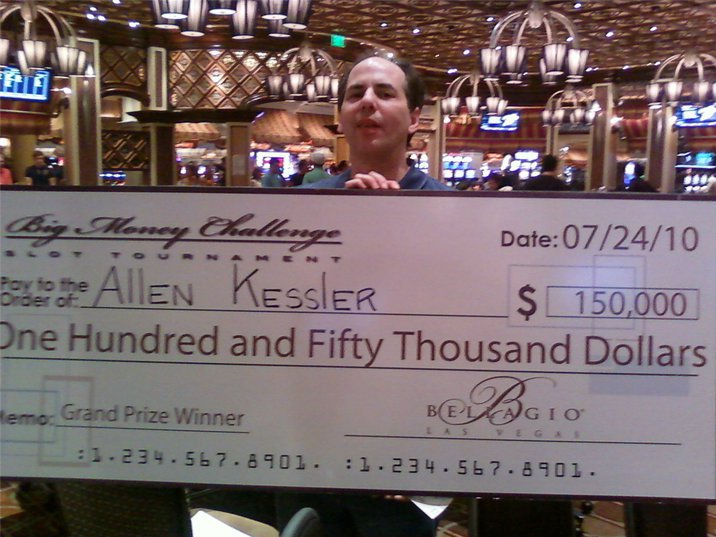
He will also share that wealth at random. Those of you out in Vegas should keep an eye out for the next time he offers to take someone out for dinner. Granted, it will be a comped dinner, but isn’t the best food free food?
While we all like to have fun with Allen, there’s no denying that he is one of the most well-rounded poker players in the game. He plays all the games and has enjoyed success in all of them.
Kessler has won tournaments in everything from NL Hold’em to HORSE, Omaha Hi-Lo and the 8-Game mix. It takes skill and discipline to play multiple variants of poker well, and he’s got it in spades.
Phil Ivey was finally inducted into the Poker Hall of Fame in 2017. Joining him was David “DevilFish” Ulliott, a player who many feel should have been inducted in 2015.

Now we look forward to 2018 and wonder who will be the next pair inducted into the Hall of Fame. Debates have already begun, as has debate on whether changes need to be made to the HOF and its voting practices.
For a long time now, I’ve been an advocate of shaking things up in the Poker Hall of Fame, so I felt compelled to make a list of seven things that ought to change.
Prior to this year, induction into the Poker Hall of Fame usually included some type of awards dinner or induction ceremony. This year, the induction was announced on ESPN TV during a break. That’s it.
Poker Hall of Fame reveal coming up next on ESPN! @KaraOTR @phil_hellmuth and I at the break desk talking main event final table
— Daniel Negreanu (@RealKidPoker) July 22, 2017
If you ask me, that’s a lame way to induct players into the Poker Hall of Fame. It seemed a bit disrespectful to both players to do it in such a tame fashion. I’ve seen a couple of arguments stating that Ivey wouldn’t have shown up to receive the award. So what? Poker should have still gotten together if for no other reason than to celebrate the life and career of DevilFish.
Congrats to the Poker Hall of Fame class of 2017: Phil Ivey and David “Devilfish” Ulliott!https://t.co/XTaJVwSkVi pic.twitter.com/Vyk5ovDz6e
— WSOP (@WSOP) July 22, 2017
Furthermore, I think that the induction into the Poker Hall of Fame should be more of a spectacle than it has ever been. It ought to be an occasion to showcase the elite of the game and the players who are being enshrined.
Why can’t Poker Central, for example, put together a tribute show for the Poker Hall of Fame each year and highlight the life and career of the inducted players? If the person being inducted isn’t willing to appear, or unable as in the case of Ulliott, the media outlet could conduct extensive interviews with other players and mega-fans.
Another idea would be to have a roast of Poker Hall of Fame inductees. Prior to his death, there was a famous roast of the legendary John Bonetti. It was very popular among the players and would be something that poker fans would eat up.
This is truly a once-in-a-lifetime occurrence for those being inducted, so why not give it the treatment it deserves?
What actually happens when a player makes it into the Poker Hall of Fame? Presently, they get the right to vote in future elections and their name listed on the HOF section of WSOP.com.
That’s it. No ring, trophy, or even a gaudy plaque. They don’t even have a banner hanging at the World Series of Poker.
A poker fan can’t hop into their car, make the trek to Las Vegas and go to a physical Hall of Fame. Fans of other sports have a physical location they can go visit to relive the history of the greats in their sport. Cooperstown, anyone?
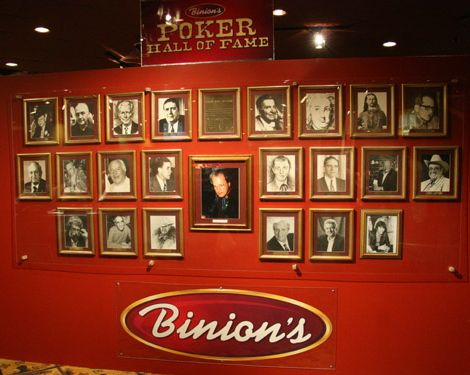
The Poker Hall of Fame has a list of names on a website with links to the players’ WSOP profiles. While it’s certainly an honor to get into the Poker Hall of Fame, it would be nice to have a permanent shrine to players.
Something that I’ve advocated for in a past is a “floating” Hall of Fame. If Caesars can’t figure out where they want to put a permanent one, create a set/exhibition that can travel around to major events, like the WSOP Circuit.
If nothing else, have a room set up at the Rio for a Poker Hall of Fame complete with plaques, bios, videos, and more of past inductees. This would allow fans to interact with poker history in a way they currently cannot without individual effort.
I have no problem with the Poker Hall of Fame including builders, but I do not believe that they should be part of the standard vote. Whenever I see someone like Matt Savage or Mori Eskandani on a list of finalists, I think of at least a dozen different players whose spot is being “taken”.
In the past, I have proposed a Veterans Committee for the Poker Hall of Fame and I am not alone, with Earl Burton being another notable advocate.
READ: Interview with Earl Burton
This is how we could have the builders, as well as some of the forgotten grinders of the past nominated and inducted into the Hall. For example, Chad Holloway reminded the world about the legendary Bob Hooks a couple of years back, but it seems very unlikely that Mr. Hooks will ever get into the Hall of Fame unless it is via a Veterans Committee.
While I understand the importance of including the average poker fan in the voting process, they have a bit too much power and influence as far as the Poker Hall of Fame is concerned. Year after year there are names on the list of finalists that are there only there because they have done well recently, usually at the World Series of Poker.
For example, do you really think that Mike Matusow would have gotten onto the list of finalists this year if he wasn’t having a comeback type of year that’s very visible to fans? Probably not.
I completely think Matusow is deserving and I personally want to see him in. With that said, look at the 2015 and 2016 lists of finalists. Where was Matusow’s name? Nowhere to be seen, and that is because he was not performing well at the time.
The fans should definitely be part of the voting but I think that only 1–3 of the 10 finalists should be from fan voting. Take the top three from fan voting and add them to the list.
As for rest of the list, criteria should be established. Allow the existing Poker Hall of Famers to recommend 3–4 players for inclusion. The remainder ought to be nominated via a panel of poker media, industry, and poker professionals, similar to what the Global Poker Index does for the American Poker Awards.
Reducing the fan impact could help in crafting a wider variety of nominees each year and reduce the number of “what have you done for me lately” finalists we see annually.
The Poker Hall of Fame needs to update their induction criteria to reflect the modern poker world. Presently, the criteria for induction are:
Some feel that one must play in high-stakes cash games in order to be considered. Also, it is clear that consideration is focused exclusively on live play.
Old school ways of thinking regarding the Poker Hall of Fame need to change. How many poker players have won millions playing the highest stakes cash games online but don’t frequent live cash games? The same can also be asked with regard to online poker tournament players.
Speaking of tournaments, should someone who has won $20 to $30 million in live poker tournaments be considered for the Poker Hall of Fame? They may or may not have played against the best in the world in cash games, but have bested everyone in tournaments.
For years, many thought that Carlos Mortensen would not get into the Hall because he was known primarily as a tournament player. Thankfully, that changed last year when he was inducted. He certainly deserved it and hopefully this set a precedent for other successful tournament players.
New guidelines are also needed for online poker players to have a reasonable shot at enshrinement in the Hall of Fame. For example, a player like Chris Moorman has a solid live poker resume but not one that’s HOF-worthy. However, if you consider he’s #1 all-time in online tournament earnings, he’s definitely worthy.
Globally, many people who start gambling at top online casino sites eventually get the itch to try poker and thus get their start at online poker rooms. Many of those players have played more hands in a few short years than some Poker Hall of Famers have in their entire career! Some have gone on to win (and lose) more money online than some of those legends have in live poker, yet because they’ve done so online only the hardcore poker fans know they exist. Should these types of players be relegated to “random statistics” in poker history?
We haven’t event touched the growing number of players who have bloated tournament earnings thanks to High Roller tournaments. How will that skew future Poker Hall of Fame considerations?
Changing the criteria is a necessary step that is needed to help the Poker Hall of Fame grow in the future but may not be the easiest thing to accomplish. One thing that is clear is that the criteria used in 1980 to induct players should not be the same for those going into the Hall 5, 10, or 20 years from now, as it has the potential to exclude many deserving players who will become eligible in the future.
While Caesars proudly owns the Poker Hall of Fame, it is almost an afterthought in comparison to their expansion of the World Series of Poker brand. The fact that the induction was no more than an announcement during the Main Event final table break made it seem almost like a “redheaded stepchild” in the company.
I’d like to see the Poker Hall of Fame sold to another company that can give it the attention it deserves and a permanent home. An organization like the Global Poker Index would be perfect because it isn’t “too big” to give the Poker Hall of Fame the attention it needs. Moreover, I think acquiring the Poker Hall of Fame would be a big feather in the GPI’s corporate hat.
Next, for those wanting PokerStars founder Isai Scheinberg inducted, don’t hold your breath. Since he is still “at large” and never answered the Black Friday indictments, it is hard to see him ever getting in as long as Caesars controls the WSOP. He hasn’t even made the list of finalists, and I doubt it will happen until he either answers charges or the Poker Hall of Fame is out of Caesars’ hands.
Isai Scheinberg who started @PokerStars sits next to the man who kicked off the poker boom @CMONEYMAKER at #UKIPTIOM pic.twitter.com/fekodZd0iR
— Danny Maxwell (@MannyDaxwell) October 3, 2015
Why? WSOP.com. What would it look like to have someone in their Hall of Fame who is still facing indictment for Black Friday? That would potentially raise some suitability questions in the future, especially in states that choose to enact a bad actor clause. I’ve been told that line of thinking is a bit simple-minded, but hasn’t that type of thinking been holding up things regarding online poker’s legalization in California for years.
It the present rate of induction, we will never induct everyone deserving of going into the Poker Hall of Fame. There’s already a backlog and, as players continue to age, there are more deserving individuals becoming eligible almost every year.
That’s why the powers that be ought to consider raising the maximum number of inductees to four, rather than the current two. This would help clear up the backlog a bit and make future Hall of Fame classes a bit more reflective of the current state of poker.
Maybe a mechanism akin to Major League Baseball’s maximum years of eligibility/times on the short list ought to be considered, after which candidates would be moved to the Veterans Committee for consideration. Regardless of how it’s done, an increase in number inductions is needed to eliminate the backlog.
Editor’s Note: Jared gives away free advice and mental game poker tips via his newsletter, which you can sign up for at jaredtendlerpoker.com.
The World Series of Poker is over; for a lot of players that means it’s time for a well-earned rest.
Many tournament players view the end of the WSOP as the end of the calendar year and consider the PokerStars Championship Barcelona at the end of August (or the WCOOP in September) as the start of the poker year. Why not make it official and treat your poker business like your fiscal year runs from August to July?
Well you might be asking why bother? What’s the advantage? I’m not going to lie; the advantage may not be huge. But in a game of slim edges, this approach could help improve your motivation, study habits and, ultimately, your play—when it matters most.
When you view the end of the WSOP as the end of your year, this downtime can also be used as a period of reflection and goal setting for the next fiscal year. This is similar to what most people do at the end of the calendar year. Given the tournament poker cycle, however, it makes sense to do this now because the next 12 months become a build up to next year’s WSOP.
Feels great to be back! First time in a few years #lifehappens pic.twitter.com/sxTEfyBrPH
— Jared Tendler (@jaredtendler) July 7, 2017
This issue of fiscal timing reminds of a conversation I had with a real estate agent that I helped this time last year. For him, 80% of his business takes place between February and July, and every year he struggles to know what to do during the month of August when business is dead. It turned out that simply adjusting from calendar year-thinking to a fiscal year-thinking (of August to July) really made a difference. August became a period of reflection and game-planning for the next 11 months. September was month to generate leads, and October through December were for prospecting. This way, he went into January with a full head of steam and that led to a 35% increase in business for a guy who was already doing pretty well.
READ: Review of Jared Tendler’s The Mental Game of Poker
Instead of looking at this quiet spell as just a pure vacation, treat it like you would the end of the year. Reflect on the last 12 months and think about:
Then, think about your goals for next year and make a plan for how you’re going to become more efficient with your development as a player.
One thing to consider is creating a training cycle similar to how professional golf and tennis players do in preparation for the four major yearly championships. The top players work out their training and playing schedules with the goal of trying to peak for the majors. They’ll highlight key areas of development in their game to work on in each training cycle and then steadily work to integrate those changes in training, smaller events, and eventually the majors. After each major they’ll reflect, and rinse/repeat. (For you sticklers on accuracy out there – no, tennis players don’t do these during the two week break between the French Open and Wimbledon.)
You could pick out your own ‘Majors’ in poker and schedule your own training cycles. This might be, for example, WCOOP, PSC Bahamas, SCOOP, and the WSOP. If you are a low-stakes player it might be Micro Millions, SCOOP, your favorite live local tournament series, and the Colossus. You can even do this if you are a cash game player, if you have identified the best times of year to play, or maybe you just want to pick three or four arbitrary periods where you want to play high level poker.
In these cycles, there’s a steady shift from heavy emphasis on studying/learning to predominantly playing. For example, this could mean you would only study for the first two weeks. Then, during the next two weeks there’s a 50/50 split between studying to playing, 20/80 the two weeks after, and all playing (with just some minor adjustments) once the festival has begun.
This system is designed to aggressively reach high competence in a short period of time, and for some players it works very well as preparation for big events. Just keep in mind that the timeframe and ratio split can easily be adjusted based on the practical realities of your schedule, bankroll, and priorities.
LISTEN: Interview with poker mental game coach Jared Tendler
One potential problem from working this systematically: it can cause your expectations to rise and losing could become even more painful if the system doesn’t perform as well as you want or your results aren’t good. I don’t see this as a reason not to try it though. Plus, I suspect there are players out there who avoid systematic training like this precisely to avoid greater pain. In other words, their laziness or lack of willingness to study efficiently is an attempt to avoid their expectations getting to be too big. My solution: push yourself to work hard and simply adjust your expectations.
So often, tournament poker players just think from series to series or tournament to tournament. I understand why, as there’s so much unpredictability in the game—your life could change overnight with a big tournament score or, alternatively, you could brick more events in a row than you thought possible and be forced to reevaluate your future. Nonetheless, thinking in cycles can give you a new way to organize your year to be playing your best poker when it matters most.
Now you can get the audiobook of both The Mental Game of Poker 1 & 2 for free via @amazon https://t.co/OTRAlXqSo4 pic.twitter.com/fsmTsPmoSZ
— Jared Tendler (@jaredtendler) July 19, 2017
Before diving deeper into reviewing Upswing Poker Advanced Heads-Up Mastery course, I need to give a little context and background. As a fanboy, the 2017 World Series of Poker (WSOP) was awesome. Numbers were up, big names captured gold, and having both PokerNews and PokerGO capture the action was a treat. One of my favorite storylines over the summer was watching Doug Polk take down the $111,111 One Drop High Roller for $3,686,865 and his third gold bracelet.
On the flip side, things didn’t go so hot for me as a player. I played in eight bracelet events (probably a half dozen more about town) and finished in the money just once for barely more than a min-cash. All the while, my game just didn’t seem up to par and it did a number on my confidence. To top it all off, I lasted just three hours in the WSOP Main Event (it’s a long story that’s best summed up by me bloating too many pots instead of playing small ball), which is shameful.
On my long flight home from Vegas, I resolved to work on my game and return for the 2018 WSOP a new-and-improved player. Given that the aforementioned Polk had won three bracelets in four years, not to mention millions of dollars in prize money, I figured there was no better place to reinvigorate my game than on his and Ryan Fee’s training site, Upswing Poker.
Since it launched in May 2015, Upswing Poker has grown into one of poker’s most recognizable brands, bolstered by the fact that its members are continually finding poker success. Over the past few years, I’ve tried to find that same sort of success, the kind I enjoyed after winning the 2013 WSOP Event #1: $500 Casino Employees for $84,915 and a bracelet. Regrettably, that same level of success has eluded me.
Recognizing that change is needed is the first step in what I know it going to be a long journey. There will be no quick and easy fix. To revamp my game, I first decided to tackle the Advanced Heads-Up Mastery course. It just seemed to make sense given that Polk is known as one of the best heads-up no-limit Hold’em players in the world. I was anxious to learn his secrets.
The Advanced Heads-Up Mastery course costs $999, which may seem steep for a lot of players, myself included. However, investing in an elite level training course taught by one of poker’s best seemed like a worthwhile investment, so I pulled the trigger.
I should probably note that this particular course was designed for advanced mid-high stakes players. In other words, it’s not where you want to start if you’re a beginner. I am far from a high-stakes player, but I do flirt with the middle stakes. In cash, I usually play $2/$5 and have played as high as $25/$50 (I once appeared on Poker Night in America and won a nice chunk of change). In tournaments, I often play $350-$2,500 buy-ins with the occasional bigger buy-in event sprinkled in.
I began by watching Polk’s intro video to the course, which I learned was comprised of 80+ videos and would span 32+ hours while covering a bunch of different topics. They included but were not limited to:
I’ll admit, I didn’t know what some of that meant, though I figured I’d learn soon enough. After all, 32 hours of video is a lot of content; in fact, it’s an intimidating amount of content (imagine going to a college-level course for an hour a day for more than a month).
Make no mistake, the videos in the Advanced Heads-Up Mastery course are chock full of sophisticated concepts. It requires you to pay close attention in order to follow what’s being said and how it all ties together. For me, the best way to do that was to keep a notepad next to my computer and jot down notes throughout the course.
Having never signed up for an online site before (I was always “old school” and learned from books), I went in with concerns regarding organization and navigability. Those were alleviated right off the bat as Polk demonstrated exactly how to use the site to its full effect.
To my satisfaction, the course was laid out in sequential manner corresponding to how you’d play a hand of heads-up poker. It begins by examining all things preflop (ranges, three-bets, four-bets, etc.), and exploring the math behind it all.
I’m far from a mathematician, and at times all the numbers and charts could be a bit overwhelming. Still, I wrestled with what I didn’t know and did my best to understand. It’s the only way to truly improve. As I said before, it reminded me a lot of the sort of classes I took in college and, to be fair, if there was a poker doctorate, Advanced Heads-Up Mastery would be a required course.

Advanced Heads-Up Mastery then moves on to street-by-street play, which covers a plethora of topics such as how to react to/execute a continuation-bet, probing range combinations, and playing against both a delayed continuation-bet and double delay continuation-bet (I had no idea what the latter was before this course).
As I progressed, I discovered Polk presented the dense information in digestible videos that usually clocked in between 6-10 minutes. In today’s short-attention span world, it’s hard to expect people to stay engaged for long periods of time, and they did a solid job finding the sweet spot.
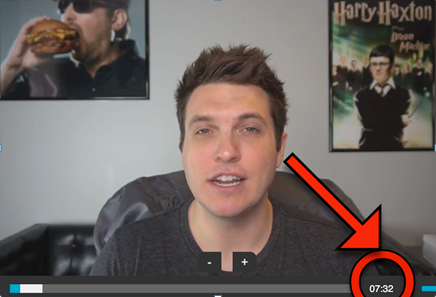
It’s impossible to highlight all the information covered in the Advanced Heads-Up Mastery course in this review, but I’d be remiss if I didn’t mention my favorite part, which was the thorough examination of three and four-bet pots. One of the weakest parts of my game is playing back at my opponents, and part of my hesitation is not recognizing the right situations to do it. Polk solved this for me, at least when it comes to heads-up play.
He delved into calling/raising from both the small and big blinds, defending in and out of position, playing a check strategy, and how playing against each bet can influence the hand on later streets (i.e., it can lead to floating, value betting, bluffs, etc.).
“You have to be a lot more concerned in the big blind about the way you’re going to play the later streets,” Polk said in the introduction to the Big Blind 3-Bet Pots section. “In general, what that means is that it drives down your bet-by street, and it means you’re going to have to play a little bit better when you decide to check.”
The first time I heard that I thought to myself, “What the hell is he talking about?” (I thought that a lot throughout the course). If you’re in the same boat, fear not as Polk’s strength is fleshing things out to help you understand the advanced concepts being presented. Concerning the above statement, he offers his own samples as examples, analyzes bet vs. check, triple barreling, and what to do when facing a flop check back.
It’s a lot to take in, but by taking it one step at a time – for me that meant consuming 3-5 videos a day – you’ll begin to grasp foreign concepts and see the lessons take effect.
The course concludes with “Play and Explain,” where Polk examines online heads-up hands he’s played against Ben “Sauce123” Sulsky. This was one of my favorite parts of the course. I’m not an online player, but I have spent years following the online high-stakes action. It was awesome to not only hear Polk explain his thought processes in each hand, but to actually understand what was being said.
For me, it tied together everything I’d just learned and I saw each hand in a new light. It was that “aha moment” where I realized all the time and effort I’d put into Advanced Heads-Up Mastery had led to a positive poker paradigm shift.
As far as content goes, I really don’t have any criticisms. It’s an exhaustive, all-inclusive course that covers everything you need to know about heads-up play. If there’s room for improvement, and this may be a bit nitpicky, it’s with presentation.
The videos are simply Polk seated at his computer talking to the viewer. He’ll often utilize charts and graphs, but I oftentimes found myself wishing there was something more, maybe onscreen text or bullet points to help highlight the most important information. I would’ve found it incredibly useful if, at the end of each video, there was a quick recap of the concepts highlighted in that particular lesson.
Furthermore, while I found video navigation easy and well organized, the site did not keep track of which videos I’d already watched. It’s a small criticism, but it would have been nice to know what material I’d already covered without having to keep track myself.
I was impressed by what Upswing Poker had to offer and feel the Advanced Heads-Up Mastery course helped me improve not only my heads-up game (I honestly finished it with the confidence and itch to play in a heads-up event at next year’s WSOP), but my game as a whole.
That’s because the course, while geared towards heads-up poker players, isn’t limited to them. I found that understanding the wide-range situations presented applied to all forms of poker. I’ve used many of the concepts presented to improve my pot-limit Omaha game and performance in MTT tournaments.
Speaking of which, I enjoyed the Advanced Heads-Up Mastery experience so much that I plan to continue my journey of poker improvement with Upswing Poker by exploring their other courses, especially Mixed Game Mastery, the PLO Lab and Tournament Master Class.
READ: Upswing Poker Lab: A Thorough Review
Success in poker isn’t guaranteed. All you can do is study, improve your game, and be prepared for the opportunities that come your way. In the past I wasn’t studying, my game was stagnant, and I let many opportunities slip through my fingers. By tackling the Advanced Heads-Up Mastery course, I finally feel like things are headed in the right direction.